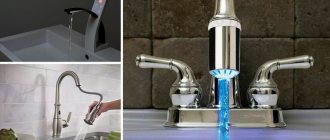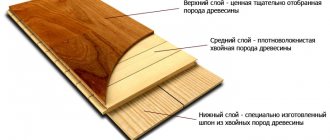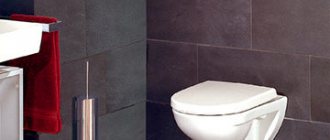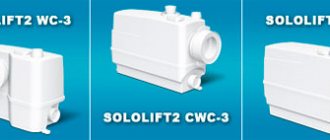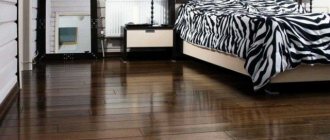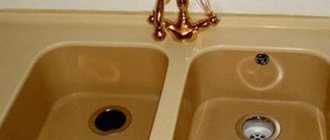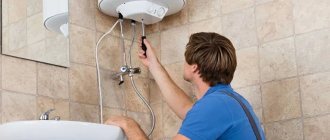Highly intelligent technologies are penetrating deeper and deeper into our lives. Not long ago, plumbing fixtures joined the list of household appliances equipped with artificial intelligence. In this article we will talk about such a miracle of scientific and technological progress as the “smart toilet”: the principle of its operation, set of functions and operational and technical capabilities.
How a smart toilet works
It would seem that the toilet that is least compatible with the concept of “high technology” is an ordinary plumbing device intended exclusively for satisfying human physiological needs. However, in recent years, models of smart toilets equipped with artificial intelligence have appeared on the market of smart household appliances.
The first such models were developed in Japan at the end of the twentieth century. These were toilets, outwardly little different from ordinary plumbing fixtures. However, they had built-in electronics that allowed them to perform a number of actions: bidet function, heated seats, “musical accompaniment” of the process, etc. Modern smart toilets differ significantly from each other in terms of the set of functions included. The basic package includes:
- toilet with flushing device and built-in bidet;
- control electronic block controller;
- all kinds of additional devices and sensors.
All components and systems of the equipment are controlled by an electronic unit. This happens either automatically or directly by the user:
- In automatic mode, the control unit independently selects the desired action based on data from the built-in sensors. For example, based on a motion sensor or touch sensor, it can raise the toilet lid when a person approaches, or lower it after the person leaves the toilet.
- Using a stationary control panel, push-button or touch controls, the user can give commands to the electronic unit mounted on the toilet body to perform any actions (bidet, music). And also on many modern models of smart toilets, it is possible, using the remote control, to configure different scenarios for their operation.
- From an electronic gadget on modern modifications of smart toilets, using a Bluetooth connection, you can also set certain scenarios.
For example, choose music, adjust the pressure and temperature of the bidet stream, and turn on room air deodorization. In this case, there is no need to install any intermediary hubs on your smartphone or tablet: Bluetooth is configured automatically.
Modern smart toilets in their basic version are not yet equipped with software that allows them to be integrated into the overall smart home control system. Therefore, to combine them with voice assistants such as Alice or Siri, you will need to install the appropriate software compatible with it. To flash standard electronic hardware, it is best to contact a qualified programmer.
According to their design, smart toilets are divided into:
- Hanging: they are attached to the wall using a support frame, which serves as a frame for the plumbing itself, and an electronic unit.
- Floor-mounted: a traditional installation method where the floor serves as a support for plumbing fixtures.
- Lift design: allows you to adjust the height of the seat to the parameters of a particular person, making it higher or lower.
All surfaces of the smart toilet are made of antibacterial material that prevents the proliferation of microorganisms. Electrical components are carefully isolated from flush and sewer systems to prevent short circuits.
VitrA Metropole 7672B003-1087
A rectangular toilet from a Turkish manufacturer will delight you with its quality and convenience. It is made of sanitary porcelain and duroplastic cover, which can bear heavy weight without cracking. A cascade flush system, horizontal outlet, a high-quality anti-splash system, a bidet and a divider are implemented here. The design of the toilet contains a special compartment where detergent is placed, which facilitates the process of hygienic use. It helps to save water, where the consumption is from 2.4 to 3.6 liters per flush. All products of this brand undergo thorough inspection before sale, so the manufacturer guarantees high quality. The entire design and special systems are thought out to the smallest detail, which helps to significantly reduce the noise level. The entire surface of the toilet is covered with a special layer of CeramicPlus technology, which repels dirt, grease and water.
Pros:
- 120 months warranty from the manufacturer;
- High quality and assembly;
- Withstands heavy weight;
- High-quality microlift, anti-splash and bidet systems;
- Saves water;
- Contains a compartment for detergents;
- Special protection against dirt CeramicPlus;
- There is a system divider;
- Low noise level.
Minuses:
- High price;
- Difficult installation.
Types of electronic plumbing connected to the toilet
Electronic toilets are quite demanding on water quality; therefore, it is not recommended to connect them directly to the central water supply. Even if tap water is clean at first glance, it contains fine mechanical suspension and chemical impurities. Getting inside high-tech plumbing equipment, they can lead to the formation of mineral deposits inside, failure of rubber seals and other defects.
Considering that the cost of smart toilets ranges from 70 to 200 thousand rubles or more, repairing them can cost a considerable amount. Therefore, between the smart toilet itself and the water supply, a cleaning system is installed, consisting of primary and fine water purification filters.
The main differences between different models of smart toilets are that they are equipped with various additional features. A smart toilet with a bidet function includes the following basic functionality:
- Human presence sensor. It sends a signal to the electronic unit when a person appears next to the toilet, or when it comes into direct contact with the seat. In response to this information, the electronics activates a number of functions included in the control script.
- Flush system. Water is supplied automatically as soon as a special sensor gives a command about the need to dispose of waste into the sewer.
- Bidet. Performs ablution using a special nozzle that delivers a stream of water under pressure. In the normal state, it is hidden under the rim of the toilet, and is pulled out when the physiological process is completed. It is possible to adjust the pressure and temperature of the supplied water, as well as the length of the washer nozzle extension. In this case, the gender and weight and size parameters of the user are taken into account.
- Heating device. The water heater connected to the bidet automatically heats the water for ablution using a thermostat to the temperature set in the operating scenario. Mini-boilers connected to smart toilets can be either flow-through or storage.
- Lid lowering and raising system. The control unit, receiving data from the presence sensor, gives a command to the servos, which raise the lid when a person approaches, or lower it when he leaves the toilet room.
- Heated seat. For comfortable use of plumbing fixtures, the toilet seat is heated to a programmed temperature.
- Air deodorization. An infrared sensor that reacts to the process of defecation provides data about this to the “artificial intelligence” of the smart toilet, and at its command, an air freshener is sprayed to remove unpleasant odors.
In addition to these functions, which have already become basic for smart toilets, modern manufacturers offer a number of additional premium features. These include:
- Tornado flush. Flush water is supplied under a certain pressure in the form of a circulating jet, which makes it possible to better clean the cavity of the toilet bowl from contaminants. At the same time, half as much water is spent as with a regular flush - 2.5-3 liters versus 6 liters.
- Hydromassage. A similar function was first introduced into the list of electronic toilet capabilities by Japanese developers. It helps prevent the development of diseases of the pelvic organs, hemorrhoids, and prostate gland.
- Irradiation of the inner surface of the toilet with ultraviolet light, which kills pathogenic microorganisms.
- Musical accompaniment. Such toilet models are equipped with MP-3 players capable of playing audio files downloaded via Bluetooth.
- Medical diagnostic sensors. Based on the level of sugar in the user’s urine, they can monitor the dynamics of the health status of a person suffering from diabetes, or timely determine the risk of developing this disease.
Using Eco Modes
All modifications of electronic plumbing provide operation in several power consumption modes. In standard mode, all systems are available and any adjustments can be made. In the economical version, the heating systems are set to minimum values. In standby mode, only the water heating device operates.
Water for washing and air for drying can be heated by the system up to 42º, maximum seat heating is 40º. Naturally, more energy is required to achieve these temperature levels than the lowest performance modes. This means that unless absolutely necessary, you should not get carried away with increasing temperatures.
In order to save not at all cheap electricity, it is recommended to choose the minimum mode of heating water and air pumped by a hairdryer that is permissible in personal opinion
The volume of water supplied to the washing nozzle ranges from 0.6 to 1.2 liters, the displacement varies depending on the pressure and function chosen by the owner. Water consumption can be reduced by choosing a water supply with the lowest pressure and refusing to pulsate the water supply to the nozzle.
Flushing is carried out with a stream of water in volumes of 3-4 and 4-6 liters, they are distributed into small and large versions. In this case, you won’t be able to save on water consumption, because... it was initially designed to meet the lower limit required to comply with sanitary standards.
How to choose a smart toilet
There are several criteria for choosing a smart toilet:
- Price. The modern market offers a large number of different models of smart toilets, the cost of which starts from 60-70 thousand rubles, and can reach 250-300 thousand for premium modifications. Therefore, you should initially decide how much money you are willing to pay for such a miracle of technology.
- A set of built-in functions. The wider the functionality available to the toilet, the more comfortable it will be to use. But at the same time, the cost of equipment also increases significantly, up to 70% of the price of which is accounted for by electronic components. When purchasing, it is recommended to soberly evaluate which functions are really useful and which you can completely do without.
- Control method. There are several available options for controlling a smart toilet: a stationary keypad, Bluetooth connection, Wi-Fi via a voice assistant. When purchasing, ask your consultant which of them is available for this toilet model.
Bien Harmony
Once again, the Turkish-made toilet is equipped with a rimless rim, which eliminates the appearance of stones, accumulation of bacteria and infections. Thanks to this design, flushing is significantly improved, but the water will not overflow due to the installation of the TornadoFlush system. The DHW function is implemented here, which helps regulate the temperature of the water for washing. The entire surface of the toilet bowl has a special coating to reduce the formation of bacteria. The bowl is made of sanitary porcelain, which is safe to use. The lid has a microlift system, so it lowers smoothly and without a sharp blow.
Pros:
- High quality of assembly and materials themselves;
- Temperature adjustment function;
- Special porcelain coating to prevent bacteria accumulation;
- High-quality microlift;
- Rimless design;
- Washed off using TornadoFlush technology.
Minuses:
- Difficult installation.
Advantages and disadvantages
This technical device, of course, has many more advantages than conventional toilets. First of all, this is increased comfort when using plumbing fixtures. However, smart toilets also have a number of disadvantages:
- High price. In addition to the price of the toilet itself with electronic filling, when purchasing, you also need to take into account the cost of installing plumbing. It is unlikely that the buyer will be able to carry out installation and connection independently, given the complexity of the technical content.
- Difficulty of repair. If a smart toilet breaks down, it is impossible to use the services of a regular plumber to fix it. You will have to call an expensive professional, and the parts to repair such smart equipment are not cheap.
- Dependence on electricity. Another significant inconvenience lies in the fact that in the event of a power outage, all the smart components of the toilet stop functioning. Not only will the flush or bidet not work, but the toilet lid will not even rise. After connecting the electricity, you will have to reconfigure all the electronics operating scenarios.
Ideal STANDARD Ecco/Eurovit W705501
The toilet is the brainchild of Belgian, German and Bulgarian manufacturers who tried to create a truly beautiful, multifunctional and high-quality toilet. The toilet bowl is made of durable sanitary porcelain, and the seat is made of duroplast. It is equipped with a microlift system, so it will lower slowly without the risk of breaking or scratching the porcelain. The bowl is equipped with a high-quality hygienic shower and direct outlet, which reduces splashes. Product weight - 14.8 kg. Porcelain itself does not allow the absorption of odors, and also does not darken over time. The toilet helps save water, spending no more than 3.6 liters per flush. It is coated with a dirt-repellent layer inside and out, which will help in the subsequent cleansing process.
Pros:
- High quality production;
- Environmentally friendly and safe materials;
- Deep drain;
- Bidet, anti-splash and microlift system;
- Saves water;
- Special coating that protects against dirt sticking;
- Manufacturer's warranty - 25 years.
Minuses:
- Complex hidden installation;
- The shower nozzle is not protected against dirt.
Top best smart toilet manufacturers for 2019
Japan is considered the birthplace of smart toilets: it was here that the first models of smart plumbing were created, but recently many models created in other countries have appeared. Let's look at the best of them.
- Washlet from Toto. A Japanese toilet equipped, in addition to the basic capabilities of smart plumbing, with a function for analyzing the sugar level in the user’s urine. In the future, Toto designers plan to turn their toilets into real home medical centers that provide data on a person’s blood pressure, pulse, and exact weight.
- Panasonic. Toilets from this Japanese manufacturer are equipped, in addition to the standard set of functions, with rechargeable batteries that allow them to operate in the event of a power outage.
- Calipso. This smart toilet, originally from the USA, is not inferior in its range of functions and workmanship to its Japanese counterparts. It is equipped with a silent flush system, hydromassage, and also allows you to diagnose the level of sugar in the body.
- Xiaomi. Chinese developers offer the user electronic lid attachments installed on conventional toilets. When connected to the sewerage and water supply systems, they can perform most of the functions of a conventional smart toilet: controlled flush jet, lighting, ultraviolet treatment of the toilet bowl, automatic flushing. Moreover, such a smart lid costs much less than a solid smart toilet.
- Vitra. Turkish smart toilets are available in two types of configurations: basic and premium. In the second case, the equipment is equipped with a remote control, adjustable lighting and a hydromassage function. The advantage of Turkish models is their budget cost, compared to Japanese and American models.
- Iota. This model was developed by English engineers and features a foldable design. After use, the toilet bowl rises to the wall, freeing up the interior space. In this case, the contents are automatically flushed into the sewer.
And yet, despite the high cost and technical complexity, smart toilets provide their users with many conveniences. In this regard, experts believe that such plumbing will be increasingly in demand among the general population.
Features of installing plumbing yourself
Despite the complexity of the internal “filling”, installing a toilet seat in a bathroom is quite simple. To install the toilet yourself, you need to provide an electrical connector to connect to a low voltage source.
- A recess is made in the wall for water hoses according to standard sizes.
- Select the optimal size of the disposal pipe for connection to the wall.
- For a tight “fit” of the toilet seat, nuts with silicone gaskets are used.
- They make a hatch to organize access to communications.
Attention! Each model has its own installation features; we strongly recommend that you read the instructions.
Automated technology ensures sterile use of the bowl, lid and seat of the toilet. Manufacturers from Japan, the USA, Turkey and other countries offer toilets, the modern technologies of which make the bathroom comfortable to visit. Once you have tested them in operation, it is impossible to refuse to use them. The presence of smart technology in the home supports the health of all family members.
Jacob Delafon Via C45559K-00
The wall-hung toilet model is made of ceramics. It has a bidet system with additional drying with a hairdryer, which is very convenient. The cascade type of flush reduces possible splashes. The toilet is suitable for vertical and horizontal flushing due to the oblique pipe. Here you can adjust the water heating temperature, and the nozzle can be adjusted to extend its extension length. All fittings are equipped with chrome plating, which protects against corrosion and makes subsequent cleaning easier. The seating area has been enlarged and is 47*37 cm. The manufacturer provides a guarantee for the product for 25 years, which indicates the high quality and reliability of the product. The anti-splash system prevents drops from getting on the seat.
Pros:
- High quality build and materials;
- Chrome plated fittings;
- Durability and reliability of the product;
- Product warranty - 25 years;
- Increased seat;
- Withstands heavy weight;
- The design has no rim.
Minuses:
- High price;
- The water connection system to the bidet and the power cable are of the open type.
Laguraty 8074A
The Italian toilet is presented for sale in the form of a solid monoblock. The design contains an oval bowl, a duroplast lid and a tank. The bidet is of high quality and comfortable, so it will be easy for you to use. Chrome plated drain and fittings ensure reliability and durability. The control is mechanical, and the water consumption does not exceed 6.3 liters. The structure weighs a lot, about 42 kg, which can complicate installation. The toilet itself has an original design, with a small sink with a mixer on top. If you wash your hands in a sink, the water that is washed off ends up in the tank.
Pros:
- Original design with bidet and sink;
- Monolithic design;
- Effective flush;
- Affordable price;
- Can save water from 3 or 6 liters;
- High-quality bidet and microlift system.
Minuses:
- Heavy weight - 42 kg;
- The warranty period is only 5 years;
- Difficult to install.
